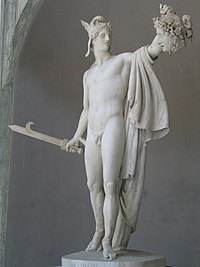
Antonio Canova’s marble sculpture, Perseus Triumphant, was created between 1797 and 1801. Standing at a height of 235cm, the sculpture is currently exhibited at the Vatican Museums in Vatican City. Originally intended for the Foro Bonaparte in Milan, it was later purchased by Pope Pius VII in 1802. The statue replaced the Apollo del Belvedere, which was taken to Paris by the French until 1815. A second version of the sculpture was commissioned by the Polish countess Waleria Strynowska Tarnowska in 1804 and is now on display at the Metropolitan Museum of Art in New York.
Major Facts about Perseus Triumphant
- Perseus Triumphant is a marble sculpture created by Italian neoclassical sculptor Antonio Canova between 1797 and 1801.
- The sculpture was originally intended for Giuseppe Bossi for the Foro Bonaparte in Milan but was later purchased by Pope Pius VII in 1802 and placed in the Vatican Museums in Vatican City.
- The sculpture is inspired by the Greek myth of Perseus, who slayed the monstrous Gorgon Medusa and saved Princess Andromeda from a sea monster.
- The sculpture measures 235cm in height and features the Greek hero standing victoriously with Medusa’s head in one hand and a sword in the other.
- A second version of the sculpture was commissioned by the Polish countess Waleria Strynowska Tarnowska in 1804 and is now exhibited at the Metropolitan Museum of Art in New York.
























